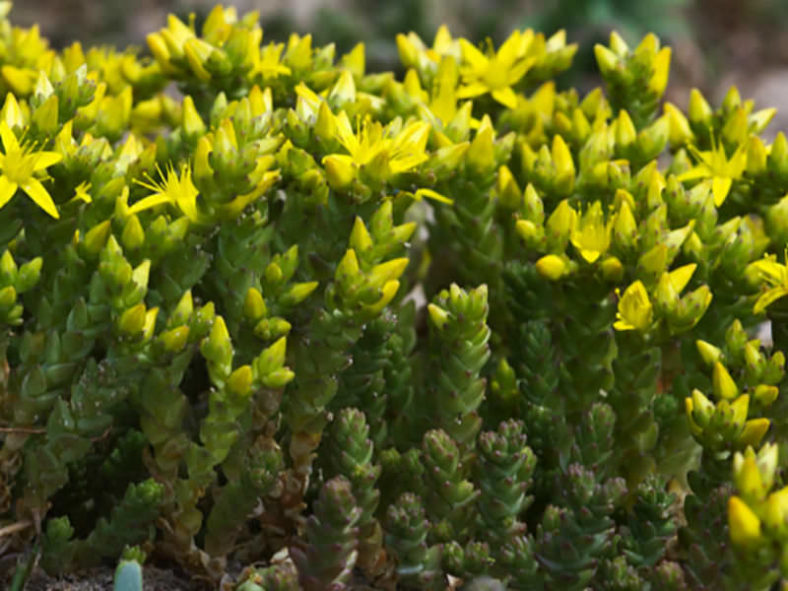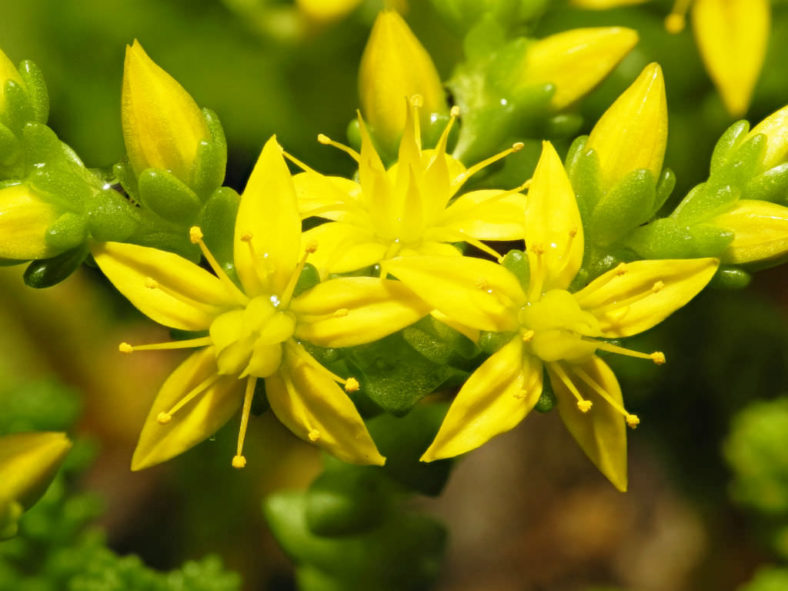Scientific Name
Sedum acre L.
Common Name(s)
Goldmoss Stonecrop, Mossy Stonecrop, Biting Stonecrop, Stonecrop, Goldmoss Sedum, Wall Pepper, Wall Grass
Scientific Classification
Family: Crassulaceae
Subfamily: Sempervivoideae
Tribe: Sedeae
Genus: Sedum
Etymology
The specific epithet "acre" (pronounced "AK-ree") means "sharp, sour, bitter, pungent" and refers to the acrid taste of this species.
Origin
Sedum acre is native to Europe and naturalized in North America, Japan, and New Zealand.
Description
Sedum acre is a mat-forming succulent with trailing, laxly branched, nonflowering shoots ascending at the tip. The stems are densely covered in typically deciduous leaves, while their lower parts often have persistent dead leaves. The leaves are yellow-green and elliptic in cross-section, measuring about 0.3 inches (0.8 cm) in length and 0.15 inches (0.4 cm) in width.
In the summer, Sedum acre produces star-shaped, bright yellow, five-petaled flowers that can appear either solitary or in clusters just above the foliage.

Hardiness
USDA hardiness zones 4a to 9b: from -30°F (-34.4°C) to 30°F (-1.1°C).
How to Grow and Care
Once established, Palmer's Sedum is a very easy-to-care plant. Like all succulents, it demands porous soil and rapid drainage. Grow in rock gardens, mounds, small slopes, natural cliff faces, and the top edge of retaining walls and curbs. This is an excellent plant for a soil pocket on a wall, a container specimen, or a hanging basket.
Palmer's Sedum is one of the most shade-tolerant Sedums, but if grown in bright light, the green leaves blush with pink. Water during the growing season, only if the soil completely dries out. It is hardy to 20°F (-7°C), and some claim it can withstand temperatures as low as 0°F (-17.8°C).
Irrigate more or repot when plants drop lower leaves. You can prune back any errant runners by simply breaking them off. You can also cut back in spring to keep the growth habit a little more compact.
Learn more at How to Grow and Care for Sedum.
Links
- Back to genus Sedum
- Succupedia: Browse succulents by Scientific Name, Common Name, Genus, Family, USDA Hardiness Zone, Origin, or cacti by Genus
Photo Gallery
Click on a photo to see a larger version.


